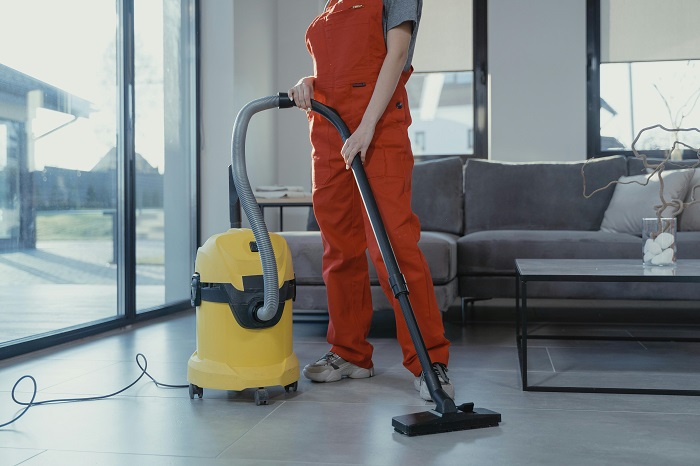Over the years, with the evolving innovation of technology, the definition and usage of cleaning equipment have changed a lot. Robots have taken on the role of tools, and the whole cleaning industry has become increasingly dependent on technology. Numerous inventions that emerged from these discoveries are now crucial elements in commercial cleaning. Massive areas in commercial buildings require professional cleaning equipment to be cleaned effectively and swiftly. Choosing among the many varieties of cleaning equipment available on the market may often be challenging. This article examines the types of vacuum cleaners commonly used in industrial settings.
Cleaning Equipment: Vacuum Cleaner
As we know, a vacuum cleaner is a type of cleaning equipment that cleans dust and dirt easily from any hard surface, including carpets, curtains, and so on. Commercial vacuum cleaners are more powerful compared to residential ones. They are wonderfully equipped with a plethora of functions that let anyone access and clean those places, which are also unreachable manually. These days, vacuum cleaners offer a variety of options, be it a wet cleaner, which takes out all the water, or a dry one, usually used for removing dust or any such dry particles, so that users can shift the mode and work accordingly. Now let us discover the types of vacuum cleaners that are generally used by the industry and residents.
Upright Vacuum
This cleaning equipment is specially designed to be used in an upright position. This type of vacuum cleaner has a very sleek body and is very lightweight. This lets a user stand or walk effortlessly while using the cleaner. It eliminates the factor of bending down close to the floor while cleaning because of its long handle and freely movable head. This is the most popular choice of cleaning equipment for everyday household usage. It makes noise while cleaning.
Benefits:
Excellent suctioning capacity.
Performs deep cleaning
User friendly.
Canister Vacuum
In contrast to the upright vacuum, the canister vacuum comes with a distinct motor and dust collector, more likely a cylinder-like structure that is linked with a flexible hose. There are two types of canister vacuums: wet-dry and dry-canister vacuums. Because of their outstanding mobility and user-friendly nature, this cleaning equipment makes them perfect for handling a variety of surfaces, including automobiles, staircases, walls, ceilings, carpets, floors like wooden and tile, types of furniture, curtains, difficult-to-reach edges, and so on. Since it can work on a range of surfaces, it is more expensive and comes with a lot of attachments. Though it is bulkier than any other model of vacuum cleaner, it has wheels that move freely. It does not make as much noise as the upright one does.
Benefits:
Bigger filters.
Fantastic suctioning and fast cleaning ability.
Performs both on wet and dry surfaces.
Cordless Vacuum
Here comes the last one, the cordless one. As it is cordless, it operates with batteries. So this is a much more handy option with very low maintenance. Cordless vacuums are very lightweight. This cleaning equipment is significantly less troublesome than any other because it’s very small in size and easier to store than the above-mentioned vacuums.
Benefits:
Cordless convenience.
Highly portable.
Energy-saving power.
Which cleaning equipment is to be chosen?
Now, when the differentiation has been made, the next question that arises is, among these, which cleaning equipment one shall buy. As soon as the user finds the purpose of buying it, they will know what is the best choice for them. However, before purchasing one, background research is a must-do for any user.




